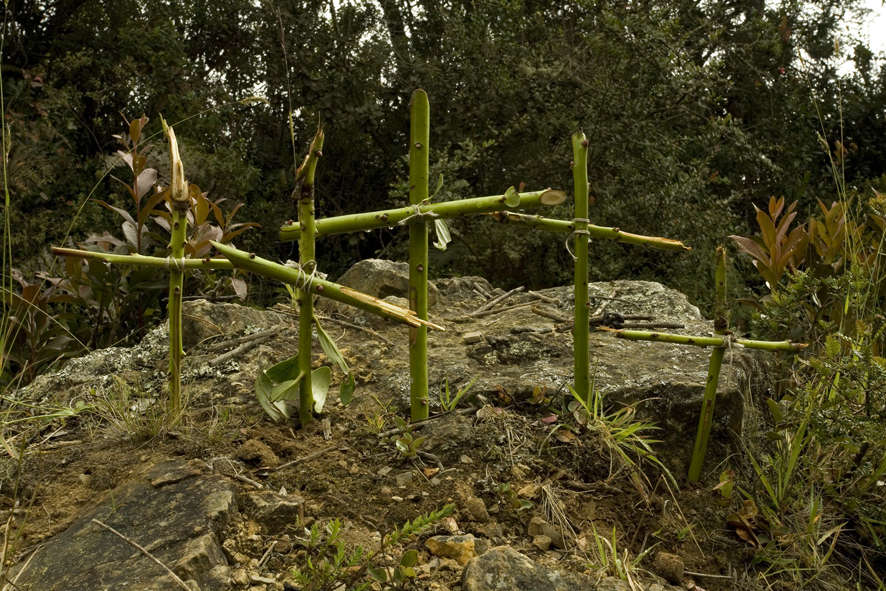Originally published on The Learned Pig, June 2014.
The top floor of a modernist apartment block seems an unlikely location for the studio of an artist best-known for his engagement with botany. Nonetheless this is where we find Alberto Baraya, one of Colombia’s most prominent contemporary artists: his working environment not the cavernous white-walled spaces favoured by Bogotá’s other leading practitioners, but a small carpeted flat piled high with paraphernalia.
I’m here thanks to Dr Crystal Bennes, my wife, who is curating 4.59,74.0, an audio map of Bogotá featuring Baraya and a number of other Colombian artists. While they’re discussing ideas, I have a snoop: dozens of fake plastic flowers lie under a table; small, stuffed, brightly-coloured birds perch atop shelves of dark wood. Outside, the bright-lit sprawl of Bogotá extends endlessly into the night.
Baraya’s most widely acclaimed work is the Herbarium of Artificial Plants, a project commenced in 2002 and continuing (on and off) even to this day. Over the years, Baraya has collected a vast array of artificial plants – in fabric, glass and plastic – from Colombia and across the world. Each specimen is attached to a mount and surrounded by notes and diagrams that serve to pin the plant in place. The resulting works exemplify Baraya’s interests in the histories of art and science, the inextricable links between botany and colonialism, and the oft-troubled relationship between humans and the environment.
Baraya, who represented Latin America at the 53rd Venice Biennale in 2009, is not the only artist in Bogotá interested in such issues. A whole host of contemporary artists have emerged for whom nature is a long-running area of fascination. Several are exploring issues that are urgent the world over: our increasingly distant relationship with the natural world, issues of global warming, technological mediation, and the legacy of the sublime. Others are exploring specifically Colombian issues.
Continue reading on The Learned Pig.
